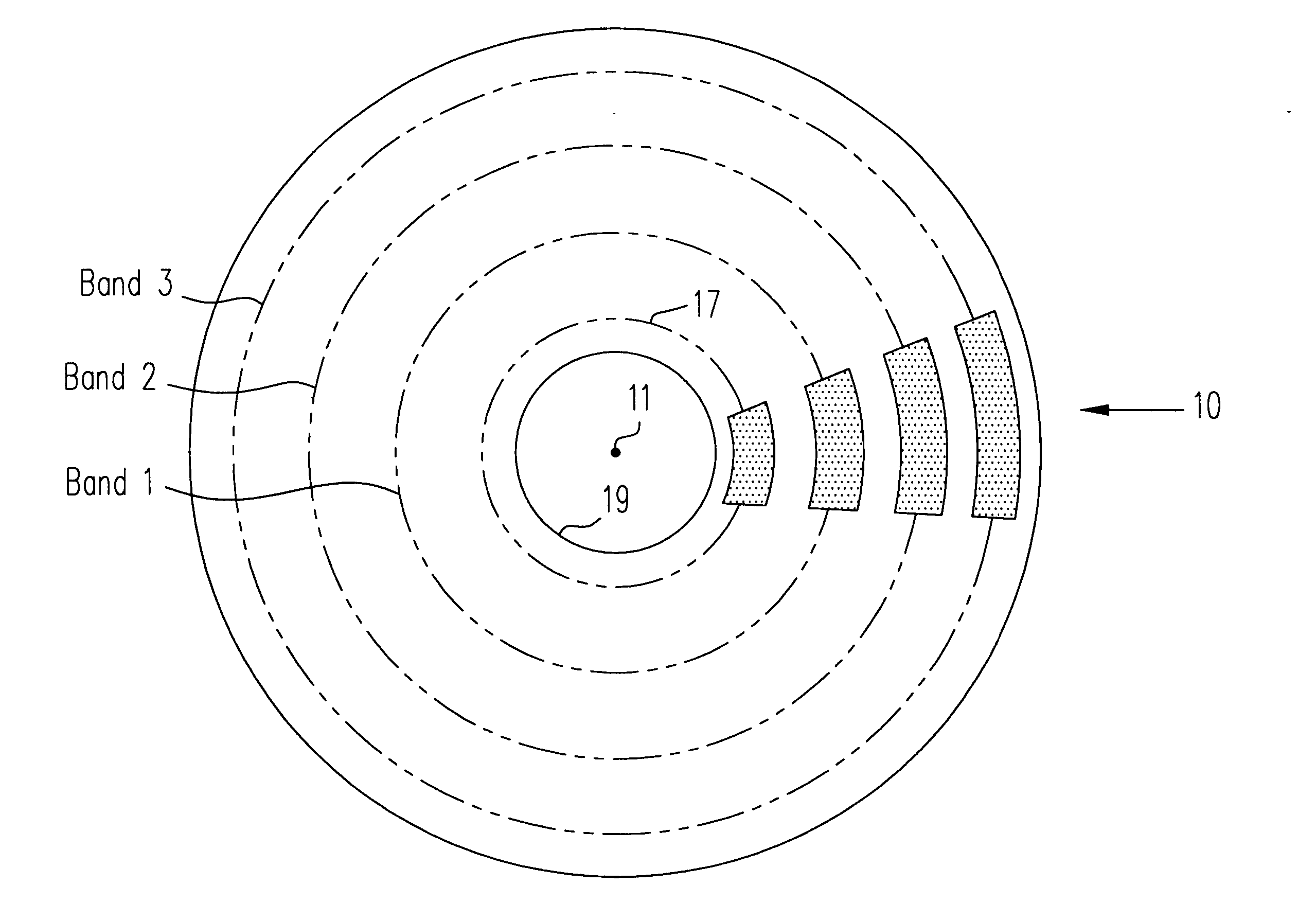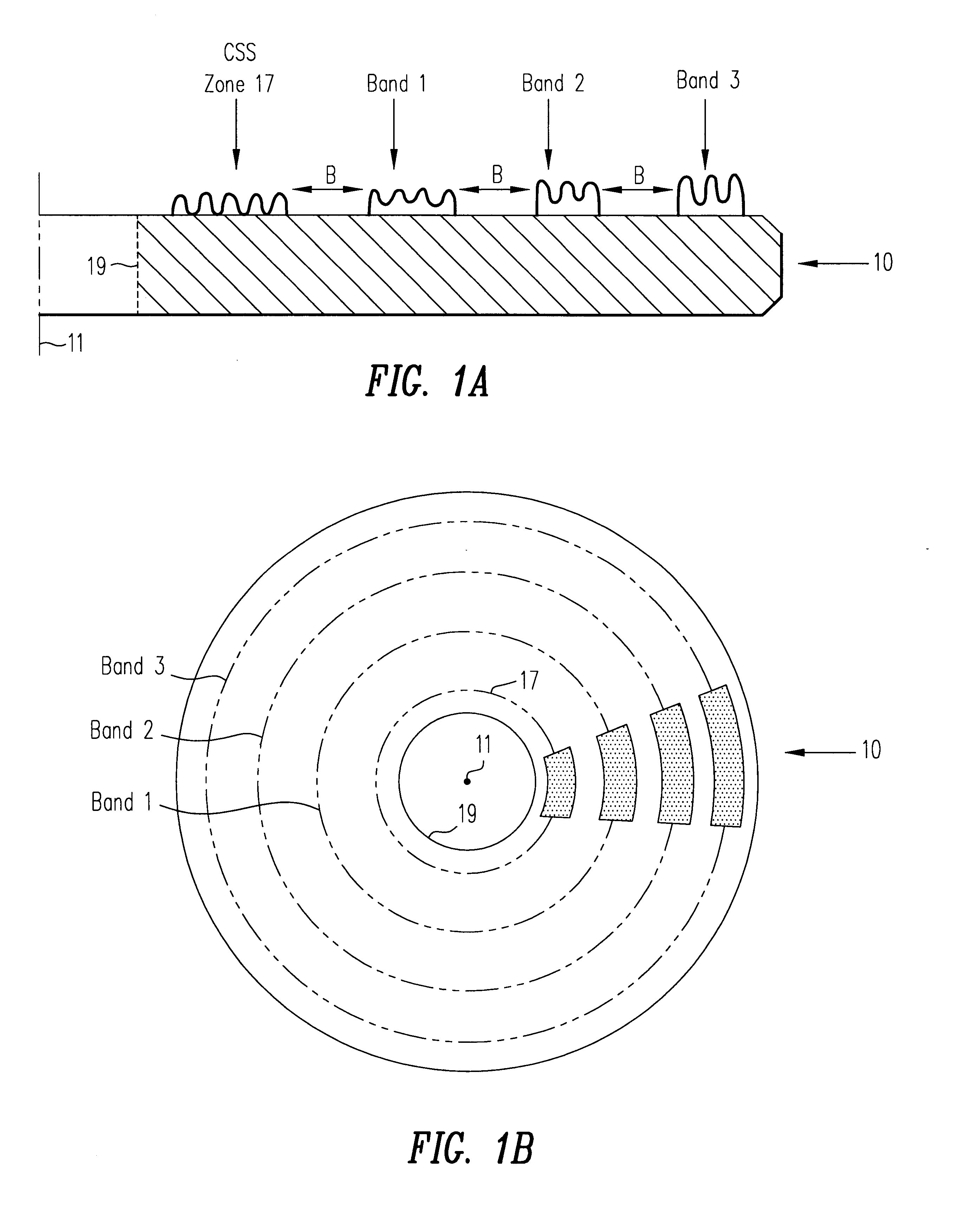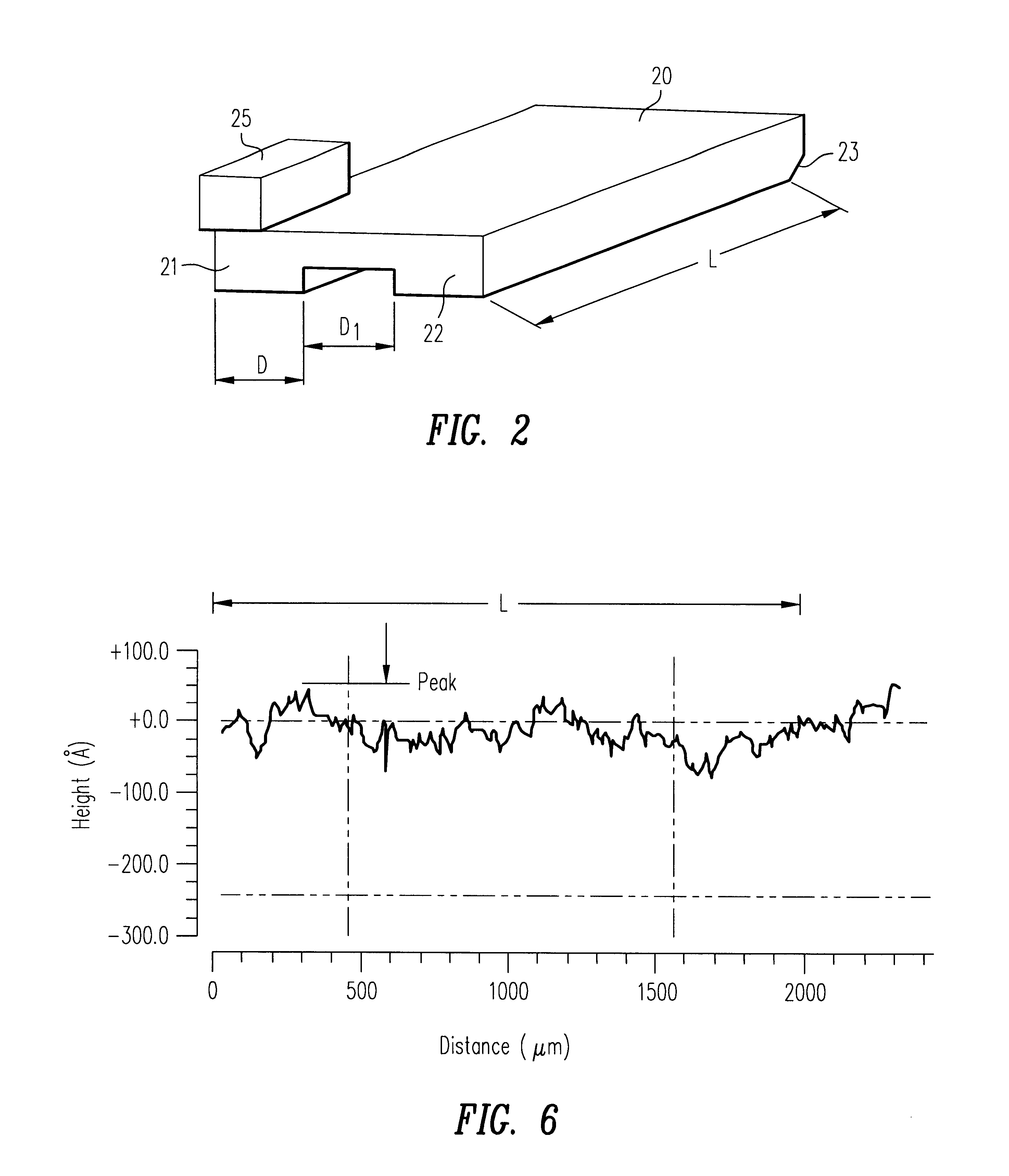Calibration disk having discrete bands of composite roughness
a composite roughness and disk technology, applied in the field of disks, can solve problems such as loss of productivity, disk waviness and runout, and inducing fly height fluctuations
- Summary
- Abstract
- Description
- Claims
- Application Information
AI Technical Summary
Problems solved by technology
Method used
Image
Examples
Embodiment Construction
Calibration disk 10 can be used to calibrate a glide head while the glide head is on the glide tester by identifying the output signal generated by the lowest point on the glide head contacting calibration disk 10. An independent fly height measurement for the glide head need not be obtained on a separate fly height tester before mounting the glide head on the glide tester when using such a procedure. Calibrating the glide head while mounted on the glide tester simplifies calibration and advantageously eliminates variances caused by the difference between the glide tester and the fly height tester, such as Z height, skew, mount flatness, and disk parameters (e.g., clamping distortion, waviness, runout and the like). To calibrate a glide head with calibration disk 10 without using a fly height tester, one of the following procedures can be performed.
In one embodiment of the present invention, the glide head being calibrated is mounted on a glide tester, such as a model MG250 manufact...
PUM
| Property | Measurement | Unit |
|---|---|---|
| height | aaaaa | aaaaa |
| height | aaaaa | aaaaa |
| roughness | aaaaa | aaaaa |
Abstract
Description
Claims
Application Information
 Login to View More
Login to View More - R&D
- Intellectual Property
- Life Sciences
- Materials
- Tech Scout
- Unparalleled Data Quality
- Higher Quality Content
- 60% Fewer Hallucinations
Browse by: Latest US Patents, China's latest patents, Technical Efficacy Thesaurus, Application Domain, Technology Topic, Popular Technical Reports.
© 2025 PatSnap. All rights reserved.Legal|Privacy policy|Modern Slavery Act Transparency Statement|Sitemap|About US| Contact US: help@patsnap.com



